The definition of codependency as a psychological condition or an illness developed in the rooms of Alcoholic Anonymous, and the people treating the alcoholic began to realize that the alcoholic was not the only problem, the only one with some unhealthy behavior, that the family and friends formed a constellation that enabled or helped the alcoholic/addict maintain the disease.
Codependency emerged to be defined first narrowly, as a condition in which a person was manipulated or controlled by someone with a pathological condition. It was broadened to define someone who’s needs are minimized and who’s sense of self-esteem comes from meeting the needs and manipulations of the narcissist or addict; In other words, creating dependence on the needs of, or control of, another. The codependent person is fixated on another person for approval, sustenance, and so on.
In it’s simplest form, a codependent is in a relationship with another dependent person such as an alcoholic, a sex addict, a love addict, a drug addict, and the addict’s behavior has negatively impacted the codependent, who, over time has developed a way of meeting his or her own needs secondarily to the addict’s. The codependent has been harmed by the addicts behavior.
Codependency is not healthy care of another, what we would call healthy care-taking, it sacrifices the needs of the codependent to rescue or enable the addict, and actually harms the addict and the codependent. Appropriate care and support of another involves taking care of your own needs (emotional and physical) in a healthy way first, allowing you to be a better caretaker. Another way to look at it is The needs of the codependent are constant, where in healthy dependency, the needs are temporary.
Codependency can exist in any type of relationship, whether family, friendship, work, romantic or community relationships. Codependency may also be characterized by denial, low self-esteem, excessive compliance, or control patterns. Narcissists are considered to be natural magnets for the codependent.
Codependency exists whether you are in a relationship with someone in a process addiction, such as sex addiction, or with someone addicted to a substance, such as an alcoholic or drug addict. Codependency does not refer to all caring behavior or feelings, only those which are harmful, and in fact, healthy dependency is necessary for healthy intimacy, but healthy dependency has a relative ease to it.
There is hope and healing for individuals who struggle with codependency. Finding a therapist trained in treating codependency along with dependency, such as a Certified Sex Addiction Therapist (CSAT) is an important first step, and becoming part of a therapist led recovery group is necessary. Since often depression and anxiety accompany codependency, referral to a psychiatrist is often necessary for medication management in the early stages.
There also exist support groups for codependency, such as Co-Dependents Anonymous (CoDA), Al-Anon/Alateen, Nar-Anon , and Adult Children of Alcoholics (ACoA), which are based on the twelve-step program model of Alcoholics Anonymous and also Coaddicts of Sex Addicts (COSA) and Sanon.
Often an important result of a Family Intervention is to highlight codependent behaviors of various family members. This is sometimes a great help in encouraging the codependent person to accept help.
Many self-help guides have been written on the subject of codependency. One of the first was Codependent No More by Melody Beattie, published in 1987. Beattie has since written several other books on the subject. Other authors include Pia Mellody, author of Facing Co-dependence.

